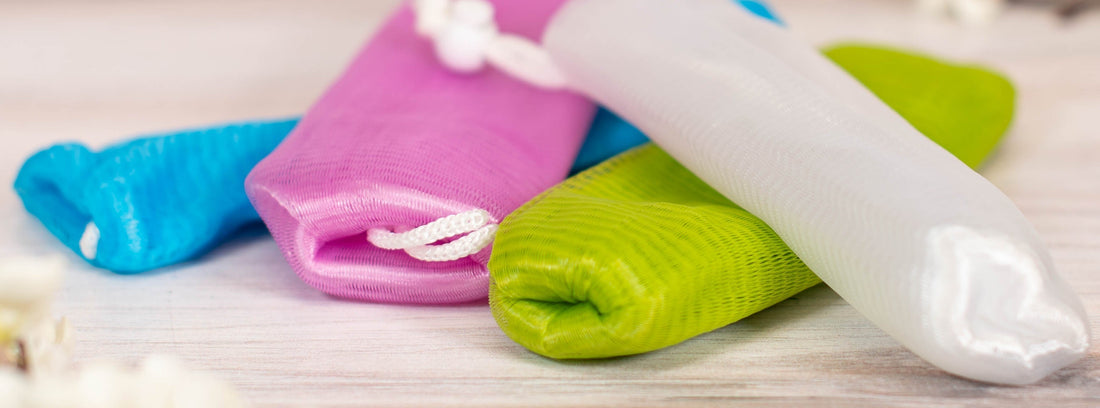Even though our goat milk soap is long-lasting, eventually you will get down to the end of your bar. When you reach the last sliver of soap and it becomes hard to manage, there are many options to use it all up rather than throwing it away.
1. Add it to your next bar of soap. Simply make sure that both bars of soap are really wet and then press them together. Allow this new bar to dry fully and just keep using the soap as you regularly would.
2. Use the slivers in a soap saver. The soap saver we have is available in multiple color options. It has several mesh layers and is wonderful for helping to produce extra lather. Both are great for holding those last slivers of soap and being able to use them up fully.
3. Make a soap ball. Save up your slivers and when you have a few, soak them in water for about one minute. Take them out and smoosh them together with your hands into a soap ball. If you have trouble smooshing them, let them set in water longer. Once you are satisfied with your soap ball, let the soap ball dry for at least one week (two weeks is even better) before using. You can separate the soap slivers by scent or mix and match for a colorful and fragrant soap ball.
4. Make a decorative soap. If you have a silicone mold you'd like to use, you can grate or chop up your leftover soap and mix it with a little bit of water (enough water to thoroughly dampen all the soap, but not enough to have standing water.) Let it set until the soap pieces are soft and malleable and then press firmly into the mold. When doing this, be aware that the remade soap will never be super smooth, but will have something of a choppy, rustic appearance. Do not use any molds with too much detail as the detail won't come through. Let the soap dry for a few weeks before using (the more water you used, the longer it will need to dry).
5. Make a "liquid soap." Gather several soap pieces and shred, making the pieces as small as possible. Put them in a blender with warm water. Blend, adding water as needed, until the texture is creamy. Please be aware that this method does not create actual liquid soap. Bar soap uses sodium hydroxide whereas liquid soap uses potassium hydroxide to start the chemical soapmaking reaction. When you add water to bar soap, you will get a slightly slimy consistency. It is great to use to wash your dishes, but it is not the consistency of actual, properly made liquid soap.
6. Use as a shave soap. Place your soap pieces into a small bowl and use a shave brush to lather. While this is certainly doable, we recommend using an actual shaving soap since it contains extra ingredients like clay (to make your razor glide more smoothly) and aloe.
7. Add to your sewing kit. You can use leftover soap pieces as quick tailor’s chalk since it works well and washes out of fabric easily. You could also cover several soap pieces with fabric and use it as a pincushion. This will keep your needles both protected and lubricated.
Goat milk soap is wonderful for your skin and definitely not something you want to waste even a sliver of. Hopefully, these ideas will help you to use every last bit of your goat milk soap.
What do you do with your leftover soap slivers?


5 Responses
Goat Milk Stuff
Hi Pam – I’m so glad you found the article helpful! :) – Erin
Pam Douglass
All good ideas and I love them! I currently try have an old soap dish just piled up with them. I’ll put them to more creative use.
Kelly Siegfried
I always have a soap sliver in my sewing box for stuck zippers. Just rub the dry soap on the zipper and it will glide smoothly.
PJ at Goat Milk Stuff
Beckie – If you look at the individual soap pages, their specific ingredients are listed. It depends on which soap you are comparing it to, so I can’t give you an exact answer here.
Beckie
What ingredients are in the bar shampoo that is different from regular bath soap ??